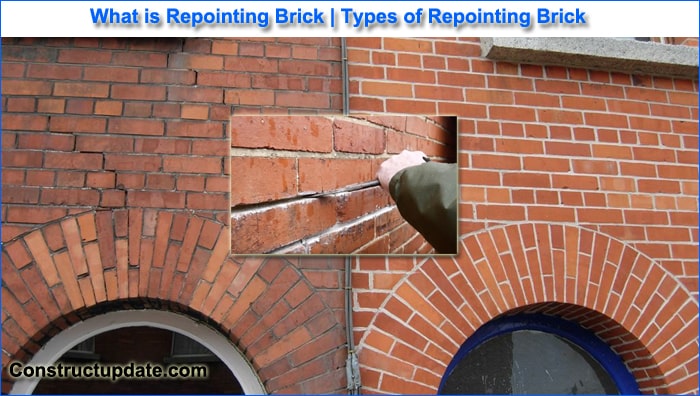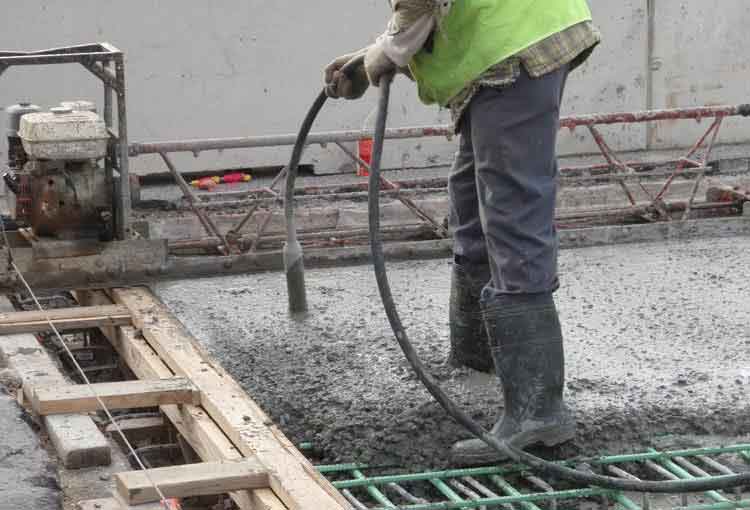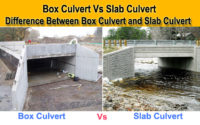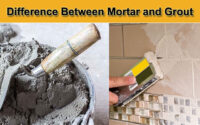What is Repointing Brick | When to Repointing Brick | Repointing Brick Types
The procedure of replenishing the outside portion of the mortar joint that links the bricks is known as repointing brickwork. It’s time to think about repointing if you can detect open joints surrounding the mortar bed.
Mortar is essential because it is the substance that connects individual masonry components (such as bricks or stone blocks).
It serves to keep water out of the building and to fill any irregularities on the bedding faces of the bricks or blocks (the bedding is the mortar used to bind the bricks to one another.)
What is Brick Repointing?
The process of mending or refilling the mortar between the individual bricks or blocks of stone that make up your home’s outer skin is known as repointing.
Despite the fact that many repairmen take up brick repointing, given the increased requirement for labour, it can be a job that is explicitly outsourced to a professional.

There are 5 signals that your brickwork needs to be repointed or replaced-
Even though your home’s brickwork is a prominent feature, you may not realise when it needs to be repointed or rebuilt. This could be because the brickwork is displaying indicators of deterioration that you didn’t realise were pointing to more serious – rather than superficial – issues.
Brickwork isn’t always as sturdy and long-lasting as it appears. It can fail if not properly cared for; here are some signs that your brickwork has been mistreated.
1. Damaged bricks
If your brickwork is broken, it could be allowing extra moisture into your home or potentially jeopardising the structural integrity of the wall.
As Real Homes points out, the brickwork may naturally adapt to damage over time. This is especially true if the mortar contains lime. Seriously damaged bricks, on the other hand, may need to be cut out and replaced, ideally with bricks that look similar to the remaining but intact sections.
2. Failed or unsuitable pointing
The masonry could have been pointed in such a way that the wall was damaged accidently. This could be the case if, for example, modern cement mortar was used to point instead of traditional lime mortar.
Modern mortars can trap moisture and prevent it from escaping via the mortar joints. As a result, moisture would be forced to emerge on the brick faces, where it may freeze and cause the brick surfaces to disintegrate.
3. Efflorescence
This term may be unfamiliar to you, but it refers to white deposits that build on brickwork as dissolved salts rise to the surface of the water.
From a practical standpoint, efflorescence does not often damage the brickwork. It is, however, ugly – and, if the manner the brickwork is put together is creating efflorescence, rebuilding the brickwork may be the best answer.
4. An inappropriately cleaned surface
It’s not a terrible idea to clean brickwork now and then; nevertheless, you should make sure you use the proper cleaning process. Otherwise, you risk causing damage to the masonry.
The protective burned surface of the brick, for example, could be removed using an abrasive cleaning process. Another alternative is chemical cleaning, however this may leave stains. Meanwhile, using water may result in efflorescence. When selecting a cleaning method, try it out on a tiny area first.
5. Damp
Have you recently noticed evidence of wetness in your home? Perhaps it’s increasing damp, as evidenced by rotting wood floors or cracking plaster. Alternatively, it could be penetrating damp, which occurs when water moves from a high point in your property to a lower point.
Types of Repointing Brick
1. Flush Pointing
It’s a frequent sort of pointing in which mortar is applied to the joint between two bricks and the margins are neatly and precisely trimmed to keep the wall level.
Trowels and straight edge tools are used to trim the edges. Flush pointing does not have a nice aesthetic, but it does protect the joints from dust, rain, and other elements.
2. Recessed Pointing
Another prominent style of brick pointing is recessed pointing. The mortar is pushed 5 mm or more away from the edge of the brick joint in recessed pointing.
It necessitates some well-trained labour, and the cost of labour is also reasonable. The house has a nice view thanks to the recessed pointing.
3. Beaded Pointing
Beaded pointing is a sort of pointing in which we utilise irom or steel metal to bind two bricks together.
In nature, the steel section is inherently concave. Beaded pointing gives the house a nice aesthetic look, however, the pointing’s endurance is unsatisfactory.
4. Struck Pointing
Struck pointing is a type of pointing that differs from flushed pointing. The mortar is laid in an inclined form in struck pointing, with the higher piece of the mortar 10 mm from the outer edge of the upper brick.
The fundamental advantage of striking pointing is that it drains rainwater quickly and efficiently.
5. Rubbed, Keyed or Grooved Pointing
It’s also a type of flushed pointing that uses a particular hand tool to create a groove. This style of pointing has a lovely appearance.
6. Tuck Pointing
Tuck pointing is a technique that is similar to groove pointing. We also make a groove with a depth of 3 mm and a width of 5 mm here. It will be filled with cement mortar after the groove has been created.
7. V- Pointing
Forming a V-groove in the flush–finishing surface achieves this.
8. Weathered Pointing
A projection in the shape of the letters V-shape is used to create this.





